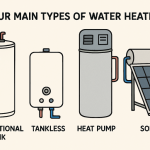Creating successful products in today’s competitive market requires more than just good ideas; it demands efficient, cost-effective prototyping methods. Traditional prototyping approaches often involve lengthy timelines, expensive tooling, and multiple iterations that can quickly drain resources. Digital production technologies are revolutionizing how companies approach product development, offering unprecedented speed and flexibility.
Forecasts indicate that the 3D printing industry will have increased from $13.5 billion in 2024 to $16.6 billion by 2025. This explosive growth reflects the increasing adoption of advanced manufacturing technologies that are transforming prototyping processes across industries.
Understanding Digital Production in Modern Prototyping
Digital production represents a fundamental shift from traditional manufacturing methods to computer-controlled processes. This transformation enables companies to create prototypes more quickly, affordably, and with greater precision than ever before.
Modern prototyping has moved far beyond simple mockups and basic models. Today’s mjf printing technology allows manufacturers to produce functional prototypes with complex geometries and intricate details. Multi jet fusion processes can create parts with mechanical properties that closely match final production materials, enabling more accurate testing and validation.
Several technologies are at the forefront of this revolution. HP 3D printer systems utilize advanced powder bed fusion techniques to create high-quality prototypes. MJF 3D printing technology stands out for its ability to produce multiple parts simultaneously, dramatically reducing per-unit costs. These innovations are making digital production accessible to companies of all sizes.
Benefit 1: Increased Efficiency and Speed in Prototyping
Speed has become a critical competitive advantage in product development. Digital production technologies can compress prototyping timelines from weeks to days, or even hours in some cases.
Rapid Iteration Capabilities
Traditional prototyping often requires extensive setup time and tooling changes between iterations. Digital production eliminates these bottlenecks by allowing designers to make changes directly in CAD files and print new versions immediately. This capability enables rapid testing of design variations without significant time penalties.
Streamlined Workflow Integration
MJF printer systems integrate seamlessly with existing design software, creating smooth workflows from concept to physical prototype. Teams can iterate multiple times within a single day, accelerating the entire development process. This speed advantage often translates to earlier market entry and competitive positioning.
Real-Time Design Validation
Digital production enables real-time testing of design concepts. Engineers can quickly validate assumptions, test functionality, and identify potential issues before committing to expensive tooling or production runs. This immediate feedback loop significantly reduces development risk.
Benefit 2: Cost-Effectiveness Through Reduced Physical Prototyping
Budget constraints often limit prototyping activities in traditional development processes. Digital production offers substantial cost savings through reduced material waste and eliminated tooling requirements.
Elimination of Tooling Costs
Traditional prototyping frequently requires custom tooling, fixtures, and specialized equipment. Digital production bypasses these requirements entirely, allowing direct creation of prototypes from digital files. This elimination of tooling costs can save thousands of dollars per prototype iteration.
Material Efficiency Improvements
Multi jet fusion technology uses powder-based materials efficiently, with unused powder recycled for future builds. This approach minimizes material waste compared to subtractive manufacturing methods. Companies report material cost savings of 40-60% when switching to digital production methods.
Reduced Labor Requirements
Digital production processes require minimal human intervention once initiated. Automated systems can operate continuously, reducing labor costs while maintaining consistent quality. This efficiency allows companies to allocate human resources to higher-value activities like design optimization and testing.
Benefit 3: Enhanced Accuracy and Quality in Prototypes
Prototype accuracy directly impacts the validity of testing results and design decisions. Digital production technologies deliver superior precision and consistency compared to traditional methods.
Dimensional Precision Standards
Modern digital production systems achieve dimensional tolerances that were previously impossible with conventional prototyping methods. HP 3D printer technology can maintain tolerances within ±0.1mm across complex geometries, ensuring prototypes accurately represent final product dimensions.
Consistent Quality Control
Digital production eliminates human variability in the manufacturing process. Each prototype is created using identical parameters, ensuring consistent quality across multiple iterations. This consistency is crucial for comparative testing and design validation activities.
Complex Geometry Capabilities
Digital production excels at creating complex internal structures, undercuts, and intricate details that would be impossible or extremely expensive to produce using traditional methods. This capability enables more realistic prototypes that better represent final product performance.
Benefit 4: Flexibility for Customization and Iteration
Modern product development demands flexibility to adapt designs quickly based on testing feedback and market requirements. Digital production provides unparalleled customization capabilities.
Design Modification Agility
Changes to digital prototypes can be implemented instantly through CAD file modifications. Teams can experiment with different configurations, test various approaches, and optimize designs without significant time or cost penalties. This agility is particularly valuable in fast-moving markets.
Personalization Opportunities
Digital production enables mass customization, allowing companies to create personalized prototypes for different user groups or market segments. This capability provides valuable insights into user preferences and market demands before full-scale production.
Multi-Material Prototyping
Advanced digital production systems support multiple materials within single builds, enabling prototypes with varied properties and characteristics. This capability allows for more comprehensive testing of product performance across different conditions and applications.
Benefit 5: Scalability and Accessibility of Digital Tools
Digital production technologies are becoming increasingly accessible to organizations of all sizes, democratizing advanced prototyping capabilities.
Reduced Barrier to Entry
The cost of entry for digital production continues to decline as technology matures and becomes more widely available. Small companies and startups can now access capabilities that were previously limited to large corporations with substantial manufacturing budgets.
Scalable Production Volumes
Digital production systems can efficiently handle everything from single prototypes to low-volume production runs. This scalability allows companies to transition smoothly from prototyping to small-batch manufacturing without significant process changes.
Global Accessibility
Cloud-based design tools and distributed manufacturing networks enable global collaboration and production. Teams can share designs instantly and produce prototypes locally, reducing shipping times and costs while maintaining quality standards.
Source: Canva
FAQs
What is the main advantage of using the prototyping model?
Customers get a say in the product early on, increasing customer satisfaction. Missing functionality and errors are detected easily. Prototypes can be reused in the future for more complicated projects while emphasizing team communication.
Which of the following is a key benefit of rapid prototyping?
A key advantage of rapid prototyping is the speed it brings to product development. Traditional methods often require extensive tooling and setup, while rapid prototyping can yield models within hours for immediate feedback.
How do digital production costs compare to traditional prototyping costs?
Digital production typically reduces costs by 40-60% through eliminated tooling requirements, reduced material waste, and lower labor needs. Setup costs are minimal, and iteration expenses are dramatically lower than traditional methods.
Moving Forward with Digital Production
Digital production represents more than just a technological upgrade; it’s a fundamental shift in how we approach product development. The benefits we’ve explored demonstrate why companies across industries are embracing these technologies. The speed, cost-effectiveness, accuracy, flexibility, and accessibility of digital production tools create compelling advantages for any organization serious about innovation.
Perhaps the most exciting aspect is that we’re still in the early stages of this transformation, with new capabilities and applications emerging regularly.
Lynn Martelli is an editor at Readability. She received her MFA in Creative Writing from Antioch University and has worked as an editor for over 10 years. Lynn has edited a wide variety of books, including fiction, non-fiction, memoirs, and more. In her free time, Lynn enjoys reading, writing, and spending time with her family and friends.














